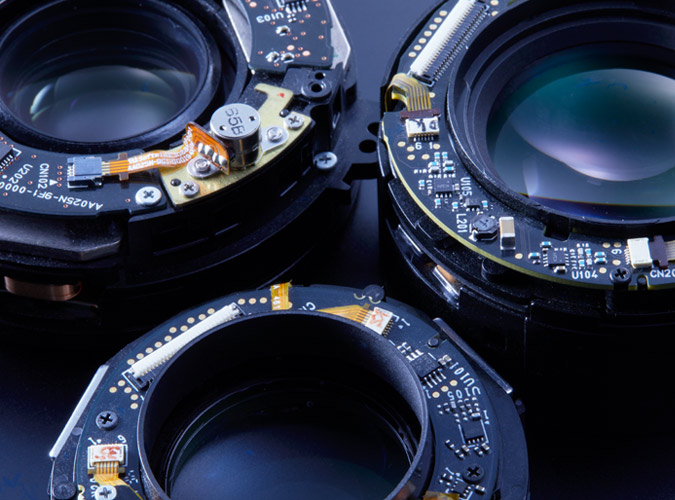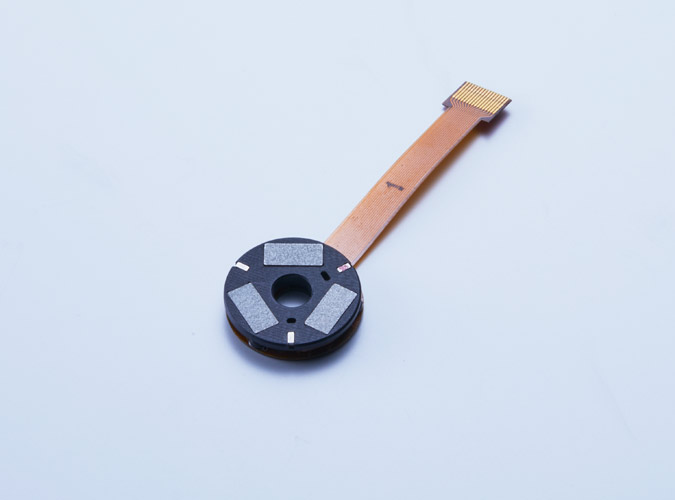
Wave of the Age
At the beginning of the 21st century, significant changes swept through the camera industry. Rapid digitization accelerated the pace of automation and computerization, and there were growing demands for performance with greater precision. These changes were not limited to camera bodies. With their distinctive cylindrical designs, at first glance today’s lenses look little different from their predecessors. Inside, however, modern lenses are so computerized that they would look foreign to their older counterparts, and they also incorporate complicated mechanisms. As these changes swept through the industry, Tamron was forced to make an important decision.
Photo: VC (Vibration Compensation) unit incorporating complex mechanisms

Tamron's Bold Decision
Tamron needed to reinvent itself in order to continue to come out with the innovative high-power zoom lenses it had been making. In 2005, Tamron established the Integrated Core Technology R&D Unit, a new organization that would pursue the development of elemental technologies. Tamron’s aim was to produce high-performance VC mechanisms and autofocus actuators (drive units such as motors) in-house. To remain unchanged–Tamron needed to continually change. This was at the core of Tamron’s decision to continue to develop the unique lenses it was known for, offering higher image quality in smaller packages.
Photo: The first-generation prototype of Tamron’s VC mechanism, based on a proprietary three-coil system

In Pursuit of a Vision
To develop new technologies internally, Tamron needed specialists from various fields. When it was established, the Integrated Core Technology R&D Unit had fewer than ten people. The unit has since brought on specialists in actuators, the software to control them and other fields, and today the unit is made up of some 40 members tackling development in teams that work in close coordination with one another. Because of Tamron’s decision to take on in-house production and undertake a bold restructuring, it has continued to develop groundbreaking lenses incorporating unique technologies.
Photo: The various parts that make up the USD (Ultrasonic Silent Drive) ring-type motor




